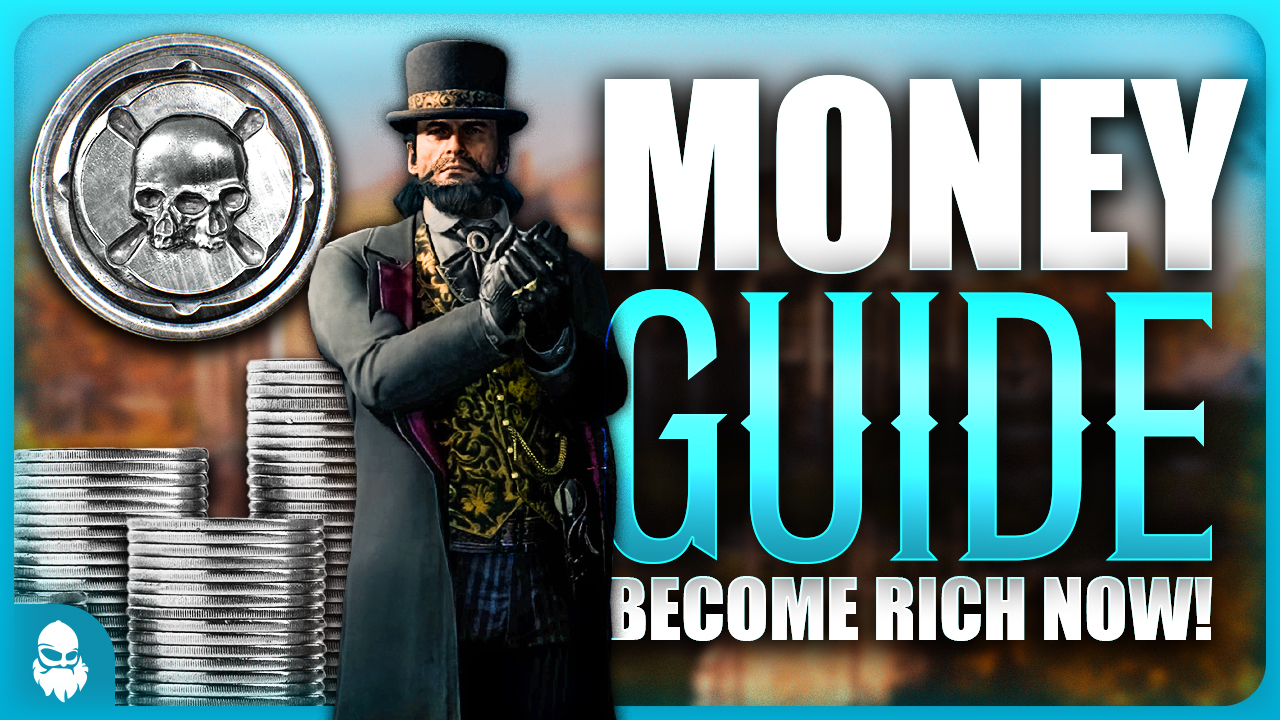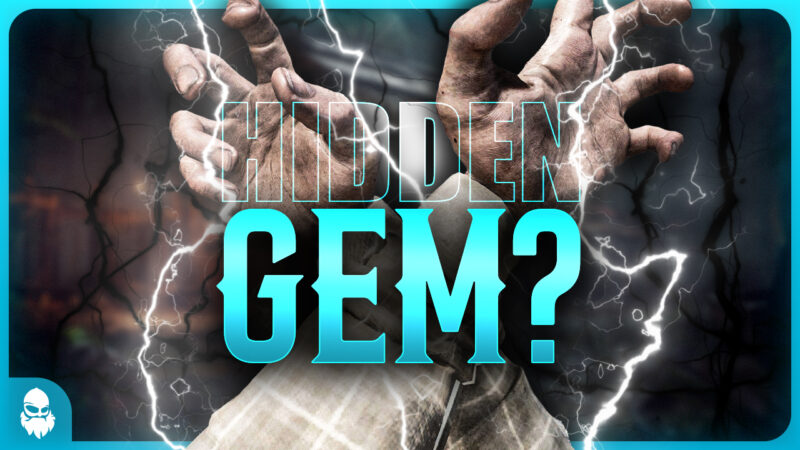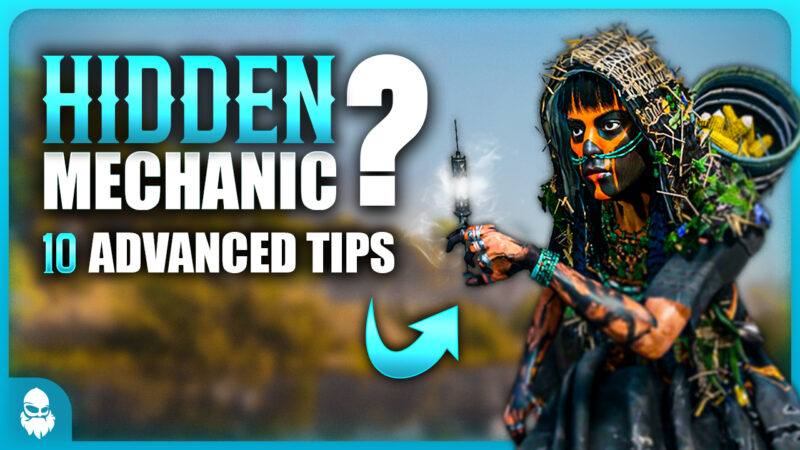
Get Rich FAST in Hunt: Showdown 1896 — The Ultimate Money Guide!
Hi guys, REX here! Are you new to Hunt: Showdown or just looking to make the most money possible in your games? Then you’re in the right place. In this video, I’ll break down all the best ways to earn Hunt Dollars in the current state of the game, along with tips on how to use event mechanics to boost your income even further. I’ll start with the most basic mechanics and then go more in-depth as we progress. Everything will be time-stamped, so make sure to check out the description to find what you’re looking for, but without further ado, let’s dive into it!
Number 1: Money bags and cash registers
As you traverse the various maps in Hunt: Showdown, you’ll find money scattered around in the form of small money bags. These bags can be interacted with and will yield up to 25 Hunt Dollars when you loot them. While this may not seem like much, it all adds up over time.
Next up, we have cash registers, which are easier to spot and spawn predictably in the same locations over time. While memorizing money bag locations would be nearly impossible, cash registers typically have just a few spawn points per compound, meaning you can easily look for them as you pass through. Make sure to memorize the cash register spawn locations as there will be a pretty good chance of another one spawning at the same spot in the future.
Cash registers can only spawn once per compound, so if you find one, you can safely move on to the next. Each register will grant between 50 and 1,000 Hunt Dollars when you interact with it, although the game heavily favors the lower amounts.
On a final note, any money you loot in-game can be seen at the top right corner of your map screen and will be lost if you die — so make sure to extract quickly if you’ve looted a lot of money that you’d like to keep.
Number 2: The “overflow” mechanic
While most of you probably already knew about the mechanics covered in part one, this next one might be new to you! When you loot a hunter or saddlebag, you typically gain a consumable or tool charge. In other words, if you’re missing a med kit charge, that charge would be replenished — or if you have full tools but are missing a consumable, you’ll gain one random consumable instead.
What you may not know is that when all your tool and consumable charges are full, you’ll start gaining between 50 and 1,000 Hunt Dollars instead. This is similar to the cash register amounts we covered in part one.
This is significant because you’ll often end up looting multiple hunters after a big fight, meaning the Hunt Dollars will stack up quickly. Note that this both works when you loot hunters and when you loot saddlebags.
Knowing about this mechanic is useful because it allows you to hit up nearby supply points or toolboxes to max out your tools and consumables before you start looting, ensuring you gain Hunt Dollars for every hunter or saddlebag looted.
Later in this guide, I’ll cover other mechanics that perfectly synchronize with this one to ensure you make even more money when you’re looting, so stay tuned!
Number 3: Boss clues and objective rewards
The main objective in Hunt: Showdown is to locate boss targets, kill and banish them, then extract with the bounty. What you might not know is that every single boss clue you interact with grants you 50 Hunt Dollars after the match, and unlike the looting mechanics we’ve covered so far, these Hunt Dollars will not be lost if you die!
This is important because it helps you sustain your loadout costs, especially if you’re running a budget build. Imagine your entire loadout costs 250 Hunt Dollars and you’re able to interact with five clues before dying. In that scenario, your loadout cost would be entirely covered by the clues alone!
Definitely something to keep in mind as you traverse the maps, and also a good reason to take the clue before entering the boss lair — even if you already know the boss is there!
Speaking of objectives, there are certain bonuses attached to playing the main objective of the game. Have you ever noticed how you killed the bounty team and extracted with the bounty, only to gain a disappointing amount of Hunt Dollars? This is because actually killing and banishing the boss plays a big part in how much money you make. Even if you kill and banish the boss just to move on, you’ll still make a bit of profit from those objectives alone.
Number 4: Team size bonuses
They say size don’t matter, and that’s ridiculous, because in Hunt: Showdown it does! You can enter a match either solo, duo, or as a trio.
The smaller the team size, the more money you make from each bounty token. Every bounty token is worth 125 Hunt Dollars, but if you are outnumbered you gain a bonus on top of the original bounty value.
For a solo player, killing and banishing a wild target and then extracting with a single bounty token will yield somewhere around 1,000 Hunt Dollars, while a trio would earn next to nothing from the same scenario.
This is because the trio doesn’t have any team size bounty bonus working in their favor, and because they only gain a single bounty token — unlike the two you get from the main bosses.
Solos, on the other hand, have the benefit of a massive bonus due to being outnumbered, which pays extremely well even though solos can only pick up a single bounty token per boss. Keep in mind though, going solo also carries more PvP risk since you don’t have backup, and while each token is worth far more – chances of dying is also far greater.
Number 5: Money-making traits
Next up, let’s move into some traits that can help boost your income even more.
The only trait that directly helps you make more money is Vulture. This trait can be assigned for 2 trait points and behaves just like the “overflow” mechanic covered in part two — except it isn’t dependent on having maxed-out tools and consumables when you loot.
Vulture ensures every hunter you loot grants you between 50 and 1,000 Hunt Dollars. And yes, you can combine this with the overflow mechanic to gain two instances of Hunt Dollars for every hunter you loot, with both rolls individually yielding between 50 and 1,000 Hunt Dollars.
Aside from Vulture, there are two traits that indirectly help you make more money: Witness and Pack Mule. Witness is arguably one of the best traits in the game and can be assigned for 5 trait points.
This trait will show you nearby dead hunters in dark sight as a white line with an orange mark at the bottom and will show recently killed AI as a white line that gradually shortens over time until it disappears. If you stand near these lines in Dark Sight, they will trigger a regeneration effect.
Because Witness shows you dead hunters in Dark Sight, you can use it together with Vulture and the overflow mechanic to locate and loot every dead hunter after a fight, so you don’t miss out on any free cash.
Finally, Pack Mule can be assigned for 4 trait points and grants you an extra tool or consumable charge when you loot, making it much easier to max out your slots before triggering the overflow effect.
Number 6: Maxing out hunters
Leveling up hunters can be tricky, especially if you’re new to the game. But did you know that once you hit level 50 on any hunter, you will automatically receive 500 Hunt Dollars?
This bonus can make a big difference over time, especially if you play a bit safer when getting close to level 50 to ensure you get those final levels before potentially losing the hunter.
If you’re lucky enough to acquire the Death Cheat trait, maxing out your hunter becomes a lot easier since you get a second chance if you die.
It can be worth hunting down those Meatheads and Brutes along the way, as they both have a chance of dropping a burn trait. Likewise, Hellborn will always drop a burn trait upon death, and Rotjaw will always drop a scarce trait.
Since Death Cheat is both a burn trait and a scarce trait, killing these wild targets or grabbing the trait after another team killed them can be worthwhile if you’re trying to maximize your hunters for that extra cash.
Number 7: Bloodline & prestige rewards
There are two leveling systems in Hunt: Showdown: Bloodline & Prestige. Bloodline is your account level and goes up to 100.
As you level up your Bloodline rank, you gain access to new tools, consumables, and traits — but you also gain Hunt Dollars at certain levels. Towards the end, you get money every level, which can be useful to know about, especially if you plan on prestiging.
This means you have less money at the start of a new prestige but more money toward the end, so you can afford to spend more as you approach Bloodline rank 100.
Another useful mechanic is the Bloodline reward after hitting rank 100. Once you’re maxed out, every 25,000 Bloodline experience grants you 1,000 Hunt Dollars.
If you want to learn more about maximizing Bloodline experience, check out my recent Prestige guide. I’ll leave a link in the description!
On the topic of prestiging: this basically means resetting your account in return for a specific reward and an increased prestige badge level. At certain levels, you’ll have the option to select a reward — a random skin, 2,000 Hunt Dollars, or a 10% experience boost.
While I wouldn’t recommend taking the Hunt Dollar prestige reward ever, I feel like I should mention it since this is a money guide. Again, refer to my Prestige guide to learn everything about Bloodline and Prestige mechanics and rewards.
Number 8: Blueprints, gun oils, and weapon unlocks
Until you unlock every weapon in the game, this next mechanic will help you sustain your balance.
Every single weapon unlock grants you one instance of that item. For example, if you unlock a Nitro Express, you gain one Nitro Express that is not marked as contraband. You can either use it to save money or sell it for half the buying price, which could be a lot depending on the weapon.
There are two ways to unlock new weapons in Hunt Showdown: interacting with blueprints and gun oils or by playing the weapon you want to unlock variants for.
Blueprints and gun oils are found on workbenches scattered throughout each map. These workbench spawns are static and always there, and you can find great resources online to locate them. Blueprints will unlock one random item based on what you haven’t unlocked, while a gun oil will unlock the next weapon in the family of your currently equipped weapon.
If all unlocks are acquired, gun oils and blueprints will not have any effect.
The other way is to play and gain experience with your equipped weapon by killing AI, bosses, or hunters. The killing blow is what matters, so make sure to get the last hit on those bosses if you are trying to unlock new weapon variants!
As mentioned earlier, every weapon unlock grants you an instance of that weapon. You can use this to your advantage by playing expensive contraband weapons to unlock their variants to either sell or use later.
One final tip is to play the Soul Survivor mode! You can find any weapon on the map, and experience still applies. You can even find gun oils and blueprints while exploring.
Since you get a free hunter each game in Soul Survivor mode, you have nothing to lose and everything to gain. If you survive the match, you even keep the loadout you’ve acquired, which helps save money on new loadouts later, but note that this loadout will be marked as contraband and cannot be sold.
Number 9: Event mechanics
Events are generally the best time to make money in Hunt: Showdown. They typically include a pledge mark system, sealed traits, and most importantly, sealed cash registers.
There is usually a special location on the map containing these cash registers, usually with at least one guaranteed sealed cash register — and sometimes two, like in the Post Malone’s Murder Circus event.
Outside of the event compound, sealed cash registers can spawn in armories, watch towers, and supply points. Each sealed cash register will yield between 250 and 1,000 Hunt Dollars, making them much more worthwhile than regular cash registers.
So far, they have been priced at two pledge marks per register. To maximize profits during an event, scouring the map for these sealed cash registers is your best bet.
I usually lay out a route based on all the possible spawns and try to spend as many pledge marks as possible before looting dead hunters. You can even steal their pledge marks after!
For example, if you wipe two teams at a compound near the Hideout — run over to the Hideout first to buy the guaranteed sealed cash register and anything else you want, then head back to loot.
Events also introduce sealed burn and scarce traits. I mentioned earlier how Death Cheat can help you make more money, and this is one of the traits you can find randomly at these spawn locations.
Sealed traits can be found in regular towers, watch towers, supply points, armories and at special event locations like the Hideout.
A super useful tip is to utilize Dark Sight to locate all sealed rewards, as they will glow when you are close enough. This means you can scan as you pass by without climbing into every tower or entering every armory.
Number 10. Quick summary to round off
Loot money bags and cash registers. Use the overflow mechanic smartly, grab clues and play solo if you want to increase the risk for a potentially higher yield. Take money-making traits like vulture, witness and pack mule. Level your hunters, claim Bloodline rewards, sell unlocked guns, and maximize on event pledge mechanics. That is your full toolbox for stacking dollars in Hunt: Showdown 1896!
That’s it for this money guide! If you made it this far, I’d love to hear your thoughts! Did you learn something new? If so, don’t forget to leave a like and a comment and smash that subscribe button! Did I forget something? Let me know in the comments as well, and until next time, I’ll see you in the Bayou!


